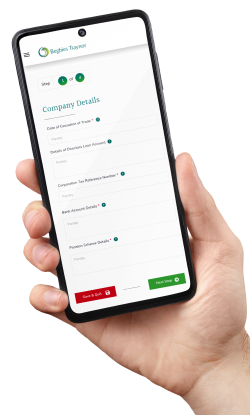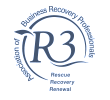Three different types of corporate liquidation processes exist in the UK, with each procedure being used under specific circumstances. Both solvent and insolvent companies can be enter into liquidation as a way to bring the business and its affairs to an orderly end.
Solvent companies are liquidated via a Members’ Voluntary Liquidation (MVL) process, while insolvent companies can be liquidated by either a director-initiated Creditors’ Voluntary Liquidation (CVL) or a court-ordered Compulsory Liquidation.
When liquidation is being considered as a closure option, therefore, the first step is to understand whether the company is solvent or insolvent. Insolvency is established by testing different aspects of the company’s affairs using the cash flow, balance sheet, and legal action tests. Essentially, if a company can no longer pay its debts, bills, and other outgoing as and when they fall due, it’s likely to be insolvent.
So let’s look at the three types of liquidation, starting with the two procedures for insolvent companies.
Concerned about the National Insurance increase?
For the 2024-25 tax year, the rate of employer National Insurance increases from 13.8% to 15% adding yet more pressure onto already squeezed cash flows. If you are worried about the impact this could have on your company’s finances, talk to the experts at UK Liquidators. As licensed insolvency practitioners we can explain your options and help you plot a way forward. Call today on 0800 063 9262.
Creditors’ Voluntary Liquidation, or CVL, is the most common liquidation process in the UK, and enables an insolvent company to close down in a way which is compliant with the Insolvency Act 1986.
A CVL is a director-initiated process which typically comes about after all chances of turning around the company's financial position have been exhausted. By opting to place your insolvent company into a CVL, you are demonstrating your desire to adhere to your legal duties and responsibilities as the director of an insolvent company. These duties include prioritising the interests of creditors to ensure these financial losses are mitigated as far as possible once it becomes clear your company is insolvent.
Creditors could suffer further financial losses if you let the company carry on trading when it’s knowingly insolvent. By engaging the services of a licensed insolvency practitioner at this stage, you are limiting this risk as best as you possibly can.
As with any insolvent liquidation, an investigation into director conduct will occur, but as you’ve been proactive in protecting your creditors, the likelihood of wrongful trading allegations is minimised.
Liquidation Portal
For Company Directors

Compulsory liquidation is triggered by creditor legal action, and although the procedure has the same end result of a CVL, the possibility of misconduct allegations is far higher. This is because you’ve waited for a creditor to take court action, rather than being proactive and protecting creditor interests as a whole.
A creditor starts the compulsory liquidation process by issuing a Winding Up Petition (WUP) against your company. If you fail to adequately respond to the WUP by either contesting the debt or paying what you owe, the courts are likely to issue a Winding Up Order against your business. This sees your company being forced into closure via Compulsory Liquidation.
The courts will appoint an Official Receiver who will oversee the compulsory liquidation of your company including the investigations into your conduct as a director during the time leading up to your company becoming insolvent.
Members’ Voluntary Liquidation enables a solvent company to be closed down in an orderly manner, and is typically suitable for companies with in excess of £25,000 to distribute to shareholders.
The MVL process is commonly used when a business has run its course and serves no further purpose, such as due to retirement or simply a desire to take out the profits within the company. Its tax efficiency is a significant benefit, as funds extracted from a company via an MVL are taxed as capital rather than income.
A member’s tax liability is also further reduced if they’re eligible to claim Business Asset Disposal Relief (BADR), which reduces the rate of Capital Gains Tax payable up to a lifetime limit of £1 million.
Start your online liquidation today
If you have decided liquidation is the right option for your limited company, you can take the first step and begin the process online using our online portal. Starting the process is quick, simple, and can be done at a time that suits you. Your information will be submitted to your local UK Liquidators insolvency practitioner who will be with you every step of the way. Click here to start your company’s liquidation online.
Formal liquidation procedures - whether solvent or insolvent - must be conducted by a licensed insolvency practitioner, who realises company assets and distributes the proceeds to creditors and/or shareholders.
UK Liquidators offers a partner-led service, providing independent advice and support to directors of solvent and insolvent companies. Please get in touch to arrange a free, same-day consultation – we operate a network of offices around the UK.
By completing the test, you will receive:
If you are considering liquidation for your company, taking expert advice at an early stage is crucial. At UK Liquidators, our team of licensed insolvency practitioners are committed to providing limited company directors with the help and advice they need to make an informed decision.




Looking for immediate support?
Complete the below to get in touch